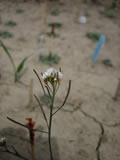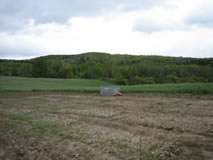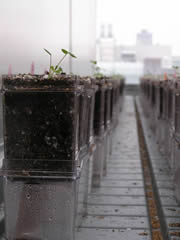To paraphrase Dobzhansky, a motto for ecological genomics might be “nothing in genomics makes sense except in light of ecology and evolution.”

For the first project in this area, we use field studies of Arabidopsis thaliana to understand general questions about the ecology and genetics of reproduction. In plants, flowering is a trait that responds to variable environmental and ecological conditions (competition, temperature) and often has dramatic consequences for fitness. Flowering also represents a fundamental transition in development for plants, and has been the subject of intensive molecular and genetic investigation.
We are currently working on several research questions in this area. Can we observe latitudinal and geographic patterns in flowering time that would be predicted from physiological and developmental studies? Are these clines modified by the functionality of flowering time genes previously identified by molecular developmental geneticists? Is there epistasis between major regulatory genes? Do ecotypes collected from different climates show differential sensitivity to seasonal cues? Have parallel clines evolved in invasive populations of Arabidopsis thaliana in North America? Are they modified or facilitated by the same regulatory genes? Can we distinguish these patterns from those produced by population structure?
In a second project in this area, we are studying the role of nitrogen deposition and genotypic variation in affecting the outcome between the model legume, Medicago truncatula, and its mutualist rhizobia, Sinorhizobium meliloti. In this project, we’re using a wide variety of approaches, including experimental evolution, microarray studies, and experiments evaluating genotype x genotype x environment interactions.
- For instance, do altered nitrogen deposition rates lead to different microbial communities, as an indirect effect of selection imposed by plants ?
- How does genetic variation in plants and their rhizobial partners affect gene expression of each partner?
- Does variable gene expression contribute to variation in the outcome of this symbiosis? Can we use genomic resources developed for Medicago truncatula to understand the ecological and evolutionary dynamics of invasive species, such as Medicago lupulina ?



